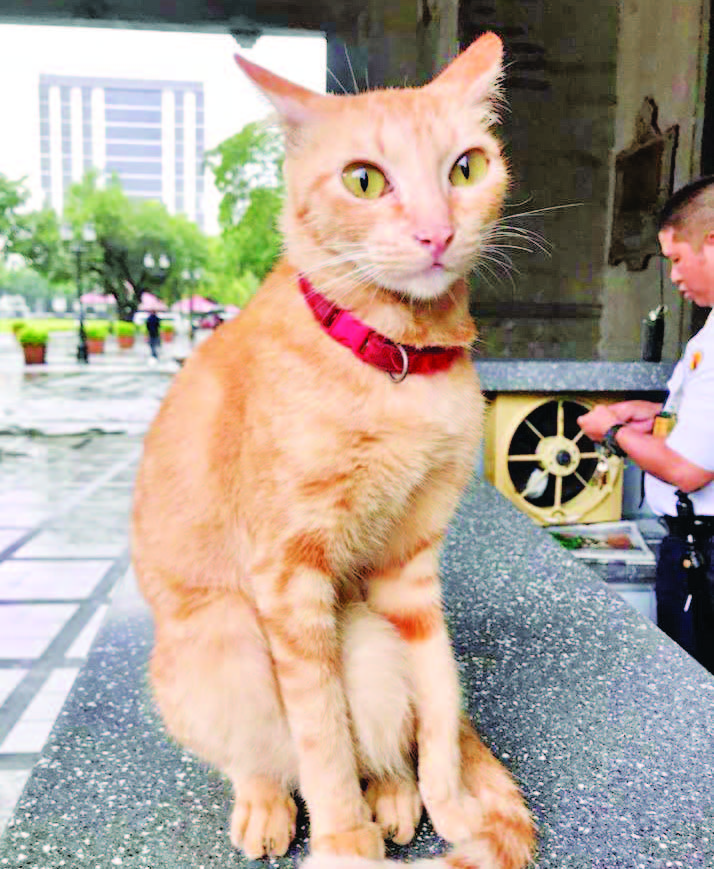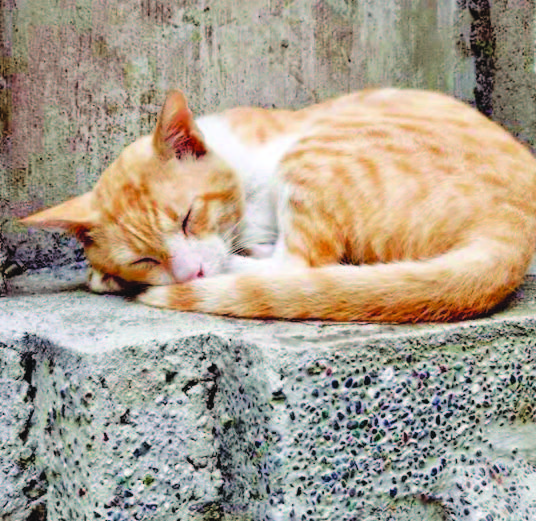What started as a passion project inspired by the Humans of New York Facebook page grew into the perfect way to introduce the University of Santo Tomas (UST) resident cats to the rest of the campus. UST BS Psychology graduate Samantha Dueñas, the current administrator of the Cats of UST Facebook page, talks to Animal Scene about how the page came to be and how it has affected the university’s feline community.
A Peek behind the Page
A self-proclaimed cat person, Samantha says she’s been adopted by cats (of course, not the other way around) who decided to live with her and tamed themselves.

“I’ve probably also had one cat of every color combination, but I’ve never had a cat with a distinct breed, and I’ve never bought a cat since I’m more for adoption and I love cats for who they are and not just for their cuteness,” she says.
Samantha has two cats: Sandstorm and Dmitri, Sandstorm’s son. Sandstorm, an orange-and-white tabby, has been Samantha’s companion for around three years, and shares a strong bond with his mom. She describes him as “the most affectionate cat I’ve ever had, which is why he’s the most dear to me.”
Purr-sonalized Posts
Samantha — who says she feels extreme love for animals, especially cats — took over the page in early 2017, the year she graduated from UST. Her best friend, Dior Diamond Gutierrez, created the page in August 2014 with two of her friends, Tamiya and Anna. The three photographed cats in and around the UST grounds, documenting feline life and posting the photos on Facebook with personifying captions.
One of the first photos posted on the Cats of UST page featured an orange puspin licking her coat, with the accompanying caption: “I wanted to look nice for my date today. I was asked out to eat lunch at the Gazebos near the St. Albertus Magnus Bldg. by my crush. Can you believe we actually got fed by Education students? It was one of the best days ever.”

The page’s familiarity with aspects of UST life and culture, combined with the cuteness of the campus kitties, made for viral internet content. Samantha says that, by the time she took over the page, the page’s number of followers had already reached around 6,000. As of writing, their Facebook page has around 11,500 followers.
Taming Tigers
“The cats living in UST are, above everything else, loved by the students,” Samantha says. She notes that most of the cats are friendly and follow their own routines: “Their sleeping spots do not change, they roam around the same building, and they wait right outside the restaurants of UST’s carpark.”
The cats have made UST their home. Although they are friendly enough to make themselves available for students to pet, Samantha still hopes students take care when handling them, considering that no one monitors the campus cats’ health and cleanliness.

While De La Salle University (DLSU) and Ateneo de Manila University (AdMU) — the former with the help of DLSU-Professors for the Upliftment of Society’s Animals (DLSU-PUSA) and the latter with the help of student organization Ateneans Guided and Inspired by Love for Animals (AGILA) — have implemented programs for their campus cats, UST has not. Samantha says there are currently no plans to start an organization under Cats of UST, and she has no knowledge of any plans the UST administration might have for the cats.
She has, however, heard of efforts from past Thomasians to persuade the UST administration to considering implementing a program for the cats, “specifically the Trap-Neuter-Return (TNR) program that was previously implemented in Ateneo through the help of [the Philippine Animal Welfare Society (PAWS)].”
The TNR program ensures that cats are neutered and vaccinated, returned healthy to their public home, and do not multiply or allow other cat outsiders to invade their colony. The cats under TNR programs also have designated feeding times and areas.
Samantha emphasizes that it was DLSU’s actions, as well as AdMU’s, that prompted her to visit PAWS and learn about their TNR program. “But even with my own attempts,” she says, “we could not get the UST administration to do the same.”
For Thomasians, “Animals are Gems”
Although Samantha says the Cats of UST Facebook page was made mostly for entertainment, it cannot be argued that the page has shed light on an oft-forgotten aspect of Philippine university culture: its animals. The page showcases dozens of photos of the campus cats alongside students and staff, reminding anyone who scrolls through its posts that they are just as crucial to the UST experience as their human counterparts.

Samantha hopes that Thomasians “take care of the campus cats always – never harm them, try to feed them good/ proper food when they need it, and don’t anger them to the point where they may harm you. Animals are gems.”
This appeared in Animal Scene magazine’s December 2018 issue.





